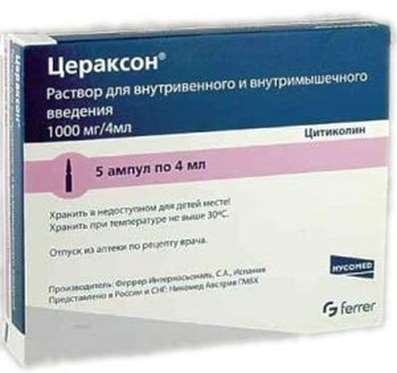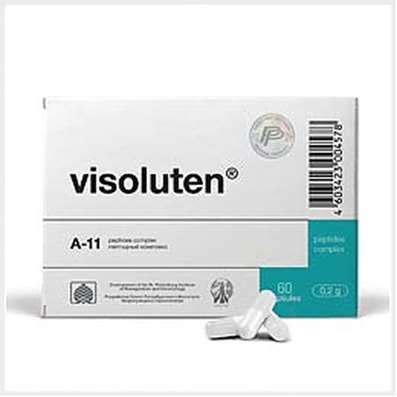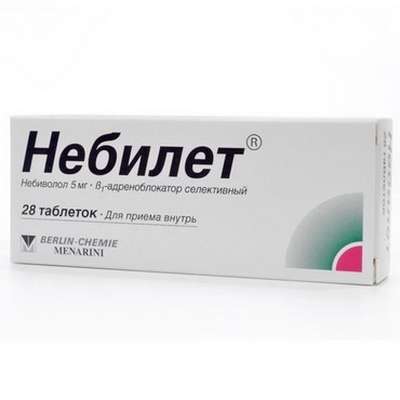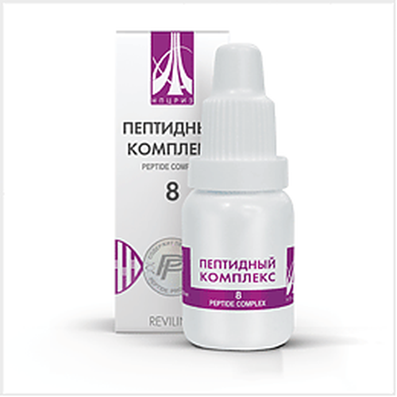Instruction for use: Xanax
I want this, give me price
Dosage form: tablets
Active substance: Alprazolam*
ATX
N05BA12 Alprazolam
Pharmacological group:
Anxiolytics
The nosological classification (ICD-10)
F10.2 Syndrome of alcohol dependence: Alcoholism; Alcohol addiction; posiomania; Dependence on alcohol; dipsomania; drunken state; alcohol abuse; Ideatornoy violations in alcoholism; Quarterly booze; Obsessive craving for alcohol; Neurotic symptoms of alcoholism; Craving for alcohol; Psychoorganic syndrome in chronic alcoholism; Reduced craving for alcohol; chronic alcoholism
F10.3 Abstinence: Alcohol withdrawal syndrome; Abstinence syndrome; Abstinence syndrome with alcoholism; Abstinence; Alcohol abstinence; Alcohol withdrawal status; Alcohol withdrawal syndrome; Postabstinctive disorder; Post-abstinence condition; Hangover syndrome; Abstinence syndrome; Alcohol abstinence syndrome; Alcohol withdrawal syndrome; Abstinence condition
F32 Depressive episode: Adynamic subdepression; Astheno-adynamic subdepressive states; Asthenodepressive disorder; Astheno-depressive disorder; Asthenodepressive state; Astheno-depressive state; Major Depressive Disorder; Vyaloapatichesky depression with retardation; Double depression; Depressive pseudodement; Depressive illness; Depressive mood disorder; Depressive disorder; Depressive mood disorder; Depressive state; Depressive disorders; Depressive syndrome; Depressive syndrome larviated; Depressive syndrome with psychoses; Depressed masks; Depression; Depression Depletion; Depression with the phenomena of inhibition within the framework of cyclothymia; Depression is smiling; Involutional depression; Involutionary melancholy; Involutional depression; Manic-depressive disorder; Masked Depression; Melancholic Attack; Neurotic depression; Neurotic depression; Shallow Depression; Organic depression; Organic depressive syndrome; Simple depression; Simple melancholic syndrome; Psychogenic depression; Reactive depression; Reactive depression with moderate psychopathological symptoms; Reactive depressive states; Reactive depression; Recurrent depression; Seasonal depressive syndrome; Severostatic depression; Senile Depression; Senile Depression; Symptomatic Depression; Somatogenic depression; Cyclotymic depression; Exogenous Depression; Endogenous depression; Endogenous Depressive Conditions; Endogenous Depression; Endogenous depressive syndrome
F40.0 Agoraphobia: Fear of open space; Fear of being in a crowd
F41 Other anxiety disorders: Anxiety status; Anxiety; Chronic alarm; Sense of anxiety; Anxious-hypothetical states; Stopping an alarm; Nonpsychotic anxiety disorders
F41.2 Mixed anxiety and depressive disorder: Depression with anxiety-depressive components; Mixed anxiety-depressive conditions; Anxiety Depression; Anxious and depressing mood; Anxiety-depressive state; Anxious-depressive conditions; Anxiety-depressive syndrome; Anxious-Neurotic Conditions
F44 Dissociative [conversion] disorders: Psychogenic psychosis; Conversion disorder; Dissociative phenomena; Pseudodegmentation; Conversion symptoms
F48 Other neurotic disorders: Neurosis; Neurological diseases; Neurotic disorders; Neurotic condition; Psychoneurosis; Anxious-Neurotic Conditions; Chronic neurotic disorders; Emotional reactive disorders
F48.0 Neurasthenia: Asthenic form of neurasthenia; Asthenoneurotic disorder; Astheno-neurotic state; Flu of young workaholics; Influenza yuppie; Neurasthenic disorders; Neurasthenic conditions; Neurasthenic syndrome
G47.0 Disorders of falling asleep and maintaining sleep [insomnia]: Insomnia; Insomnia, especially difficulty falling asleep; desynchronosis; Prolonged sleep disturbance; Difficulty falling asleep; Short-term and transient insomnia; Short-term and chronic sleep disorders; Short or shallow sleep; Violation of sleep; Disturbed sleep, especially in the phase of falling asleep; Infringements sleep; sleep disturbances; Neurotic sleep disturbance; Shallow superficial sleep; shallow sleep; Poor quality of sleep; Night awakening; sleep Pathology; Postsomnic violation; transient insomnia; Trouble falling asleep; Early awakening; Early morning awakening; Early awakening; sleep disorder; somnipathy; persistent insomnia; difficult to fall asleep; difficulty falling asleep; Difficulty falling asleep in children; persistent insomnia; Worsening sleep; Chronic insomnia; Frequent night and / or early morning awakening; Frequent nocturnal awakening and a sense of the depth of the non-sleep; Night waking
R45.1 Anxiety and agitation: Agitation; Anxiety; Explosive excitability; Internal stimulation; Excitability; Excitation; Excitation acute; Psychomotor agitation; Hyperexcitability; Motor excitement; Cessation of psychomotor agitation; Nervous excitement; Restlessness; Night trouble; Acute stage of schizophrenia with excitation; Acute mental agitation; Paroxysm of excitation; Overexcitation; Increased excitability; Increased nervous excitability; Increased emotional and cardiac excitability; Increased agitation; Mental arousal; Psychomotor agitation; Psychomotor agitation in psychoses; Psychomotor agitation of an epileptic nature; Psychomotor paroxysm; Psychomotor fit; Symptoms of excitation; Symptoms of psychomotor agitation; The state of agitation; A state of anxiety; Excitation status; A state of heightened concern; The state of psychomotor agitation; Conditions of anxiety; Excitation conditions; The state of excitement in somatic diseases; Excitation level; Feelings of anxiety; Emotional arousal
R45.4 Irritability and anger: Neurosis with increased irritability; Outbursts of anger; Anger; Resentment; Increased irritability; Increased irritability of the nervous system; Irritability; Irritability in neuroses; Irritability in psychopathic disorders; Symptoms of irritability; Dysphoria
R45.7 Condition of emotional shock and stress, unspecified: Exposure to stress factors; Exposure to extreme situations; Neuropsychic stresses; Professional stress; Psychoemotional overload and stress; Psychoemotional stress; Stressful condition; Stress; Stress loading; Stressful condition; Stressful situations; Stress of everyday life; Chronic stress; Long-term emotional stress; Psychological stress in air flights; Psychoemotional stress in stressful situations
Composition and release form
Tablets - 1 table.
Alprazolam 0.25 mg; 0.5 mg
In a planar cell pack of 10; In a pack of cardboard 3 packs.
Tablets retard 1 tab.
Alprazolam 0.5 mg; 1 mg
In the blister 10 pcs .; In a pack of cardboard 3 blisters.
Pharmachologic effect
Mode of action - anticonvulsant, anxiolytic, myorelaxing.
Excites benzodiazepine receptors, promotes the liberation of GABA and its participation in synaptic transmission.
Indications for the Xanax
Disturbing conditions and neuroses with a sense of anxiety, tension, anxiety, irritability, deterioration of sleep, somatic disorders, mixed anxiety-depressive and neurotic reactive-depressive conditions, accompanied by a decrease in mood, loss of interest in the environment, psychomotor agitation, sleep disturbances, decreased appetite, changes Body weight, somatic complaints, cognitive impairment, suicidal thoughts (guilt, low value), energy loss, etc., incl. With somatic disorders, alcohol withdrawal syndrome, functional and organic diseases (cardiovascular, dermatological, gastrointestinal), panic conditions (in combination or without phobic symptoms), panic attacks and phobias in agoraphobia.
Contraindications
Hypersensitivity, psychotic depression (not effective), pregnancy (especially I trimester), children's adolescence and adolescence (up to 18 years); Thyroid gland diseases (Table 0.5 mg).
Side effects
Headache, dizziness, drowsiness, sleep disorders, fatigue, memory impairment, depression, dysarthria, muscle weakness, tremor, coordination disorders, ataxia, body weight changes, dyspepsia, anorexia, dystonia, jaundice, liver dysfunction, decreased libido, dysmenorrhea, Urinary incontinence or retention, visual disturbances; Rarely - agitation, irritability, hallucinations, hostility and aggressiveness of behavior (more often with alcohol, drug abuse, when taking other psychotropic drugs); With prolonged use - addiction (especially with alcoholism, toxic or drug addiction), drug dependence, withdrawal symptoms (with a sharp drug withdrawal).
Dosing and Administration
Inside, the optimal dose is set individually, depending on the severity of the symptoms and the severity of the clinical effect. Increase the dose is better done by taking more medication in the evening (before bedtime). In general, patients who have never previously been treated with psychotropic drugs require lower doses. Elderly and debilitated patients are advised to take smaller doses of alprazolam, since an overdose may cause the development of excessive sedation or ataxia. It is recommended to periodically reevaluate the patient's condition and then adjust the dose of alprazolam.
| Xanax | ||
| Initial dose * | Range of doses | |
| Anxiety | For 0.25-0.5 mg 3 times a day | 0.5-4 mg per day in divided doses |
| Depression | 0.5 mg 3 times a day | 1,5-4,5 mg per day in several doses |
| Panic disorders | 0.5-1 mg at bedtime or 0.5 mg 3 times a day | The dose should be selected individually depending on the effect, it is possible to increase the dose by no more than 1 mg every 3-4 days. In clinical studies, the average dose was 5.7 ± 2.27 mg / day, some patients required a maximum dose of 10 mg per day |
| Elderly or weakened patients | For 0.25 mg 2 or 3 times a day | 0,5-0,75 mg per day in several increments with a gradual increase if necessary |
| Xanax retard | ||
| Anxiety | 1 mg per day in 1 or 2 admission | 0.5-4 mg per day in 1 or 2 divided doses |
| Depression | 1 mg per day in 1 or 2 admission | 0.5-4.5 mg per day in 1 or 2 divided doses |
| Panic disorders | 0.5-1 mg at bedtime or 0.5 mg twice daily | The dose should be selected individually depending on the effect, it is possible to increase the daily dose by no more than 1 mg every 3-4 days. In clinical studies, the average maintenance dose was 5-6 mg per day, in 1 or 2 doses. Some patients needed doses up to 10 mg per day |
| Elderly patients | 0.5-1 mg per day in 1 or 2 divided doses | 0,5-1 mg per day; The dose can be gradually increased if necessary |
* With the development of side effects, the dose of the drug should be reduced.
Typically, the usual dose is sufficient for most patients. If a higher dose is required, a dose increase should be carried out with caution to avoid the development of side effects.
Duration of therapy: up to 6 months - with anxiety and depressive disorders; Up to 8 months - in the treatment of panic disorders.
Reduce the dose should be done gradually. It is recommended to reduce the daily dose by no more than 0.5 mg every 3 days. In some cases, a slower dose reduction is required.
Studies on the efficacy and safety of Xanax in people under the age of 18 years have not been conducted.
Precautionary measures
With extreme caution apply when there is a violation of liver and kidney function, severe depression, suicidal mood, panic disorder. To avoid the withdrawal syndrome (withdrawal symptoms), treatment is stopped gradually, reducing the dose by no more than 0.5 mg every 3 days. During treatment it is not recommended to drive or other potentially dangerous mechanisms. For the period of intake, lactating women must refuse breastfeeding.
Storage conditions of the drug Xanax
At a temperature of 20-25 ° C.
Keep out of the reach of children.
Shelf life of the drug Xanax
Prolonged action tablets 0.5 mg - 2 years.
Prolonged-action tablets 1 mg - 2 years.
Tablets 0.25 mg - 3 years.
Tablets 0.5 mg - 3 years.
Do not use after the expiry date printed on the package.

 Cart
Cart





